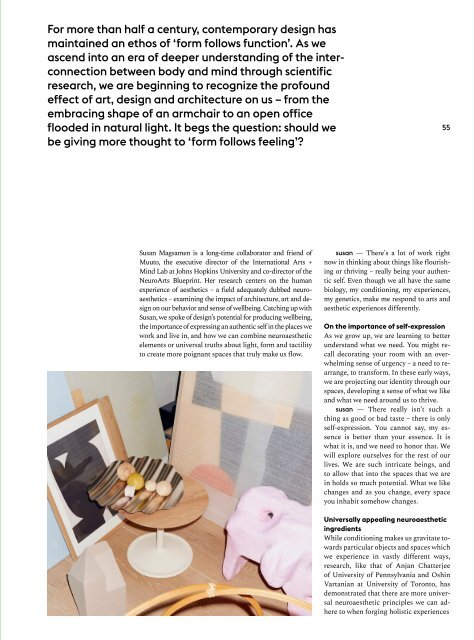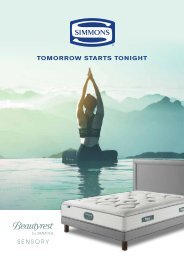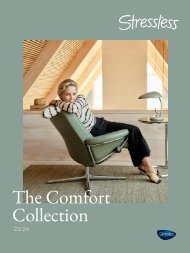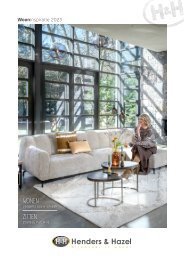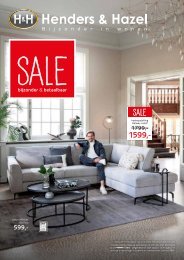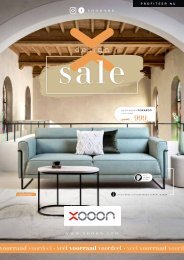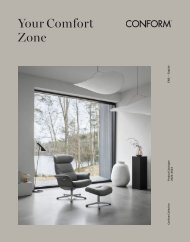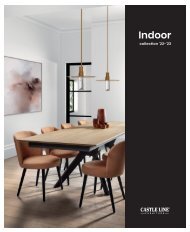Muuto_Catalog_2022
You also want an ePaper? Increase the reach of your titles
YUMPU automatically turns print PDFs into web optimized ePapers that Google loves.
For more than half a century, contemporary design has<br />
maintained an ethos of ‘form follows function’. As we<br />
ascend into an era of deeper understanding of the interconnection<br />
between body and mind through scientific<br />
research, we are beginning to recognize the profound<br />
effect of art, design and architecture on us – from the<br />
embracing shape of an armchair to an open office<br />
flooded in natural light. It begs the question: should we<br />
be giving more thought to ‘form follows feeling’?<br />
55<br />
Susan Magsamen is a long-time collaborator and friend of<br />
<strong>Muuto</strong>, the executive director of the International Arts +<br />
Mind Lab at Johns Hopkins University and co-director of the<br />
NeuroArts Blueprint. Her research centers on the human<br />
experience of aesthetics – a field adequately dubbed neuroaesthetics<br />
– examining the impact of architecture, art and design<br />
on our behavior and sense of wellbeing. Catching up with<br />
Susan, we spoke of design’s potential for producing wellbeing,<br />
the importance of expressing an authentic self in the places we<br />
work and live in, and how we can combine neuroaesthetic<br />
elements or universal truths about light, form and tactility<br />
to create more poignant spaces that truly make us flow.<br />
susan — There's a lot of work right<br />
now in thinking about things like flourishing<br />
or thriving – really being your authentic<br />
self. Even though we all have the same<br />
biology, my conditioning, my experiences,<br />
my genetics, make me respond to arts and<br />
aesthetic experiences differently.<br />
On the importance of self-expression<br />
As we grow up, we are learning to better<br />
understand what we need. You might recall<br />
decorating your room with an overwhelming<br />
sense of urgency – a need to rearrange,<br />
to transform. In these early ways,<br />
we are projecting our identity through our<br />
spaces, developing a sense of what we like<br />
and what we need around us to thrive.<br />
susan — There really isn’t such a<br />
thing as good or bad taste – there is only<br />
self-expression. You cannot say, my essence<br />
is better than your essence. It is<br />
what it is, and we need to honor that. We<br />
will explore ourselves for the rest of our<br />
lives. We are such intricate beings, and<br />
to allow that into the spaces that we are<br />
in holds so much potential. What we like<br />
changes and as you change, every space<br />
you inhabit somehow changes.<br />
Universally appealing neuroaesthetic<br />
ingredients<br />
While conditioning makes us gravitate towards<br />
particular objects and spaces which<br />
we experience in vastly different ways,<br />
research, like that of Anjan Chatterjee<br />
of University of Pennsylvania and Oshin<br />
Vartanian at University of Toronto, has<br />
demonstrated that there are more universal<br />
neuroaesthetic principles we can adhere<br />
to when forging holistic experiences


